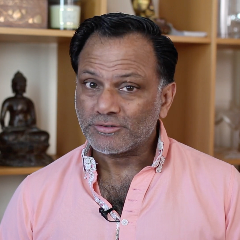You are not currently logged in. Please create an account or log in to view the full course.
Heroin Addiction
- About
- Transcript
- Cite
Addiction – The Mechanisms of Addiction
In this course, Dr Ashok Jansari (Goldsmiths, University of London) explores consequences of addiction. In the first lecture, we think about the process by which heroin generates an addiction. In the second lecture, we think about the physiological reward pathway in the brain, specifically the ventral tegmental area, the nucleus accumbens, and the front of the brain. Next, we think about some individual differences in susceptibility to addiction, looking closely at adolescence. In the fourth and final lecture, we think about some anti-drug campaign techniques which have had differing levels of success.
Heroin Addiction
In this lecture, we think about heroin as an addictive drug, focusing in particular on: (i) heroin’s mechanism of addiction being its ability to generate feelings of elation and ecstasy in the individual taking it, which is something that is craved once those effects have worn off; (ii) Nora Volkow’s study, which found that seeing heroin being taken activated the pleasure regions of the brain in addicts, much more than seeing a pleasant image of nature; (iii) Alexander and colleagues’ ‘Rat Park’ study, which split groups of morphine-addicted rats into different environments and assessed the impact of morphine availability on each; (iv) Alexander and colleagues’ findings that only rats who were placed back into the environment within which they were given morphine with other morphine-addicted rats showed a strong desire to have more morphine.
Cite this Lecture
APA style
Jansari, A. (2022, June 09). Addiction – The Mechanisms of Addiction - Heroin Addiction [Video]. MASSOLIT. https://massolit.io/courses/addiction-the-mechanisms-of-addiction
MLA style
Jansari, A. "Addiction – The Mechanisms of Addiction – Heroin Addiction." MASSOLIT, uploaded by MASSOLIT, 09 Jun 2022, https://massolit.io/courses/addiction-the-mechanisms-of-addiction

